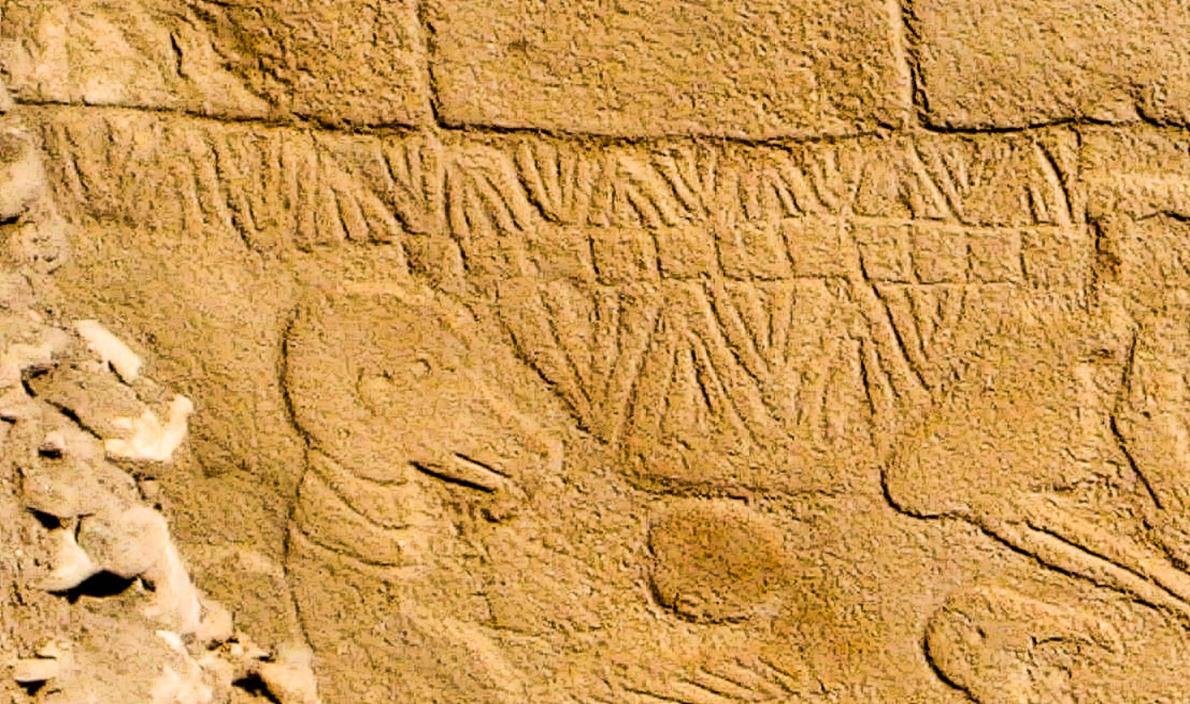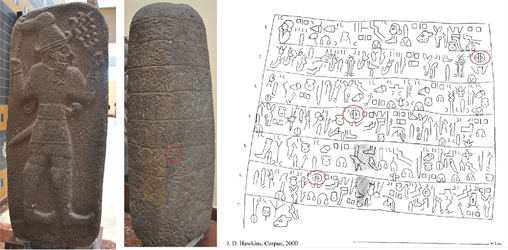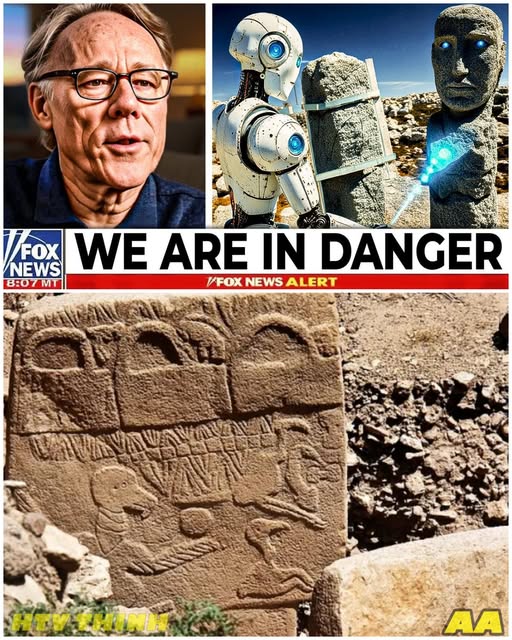
The excitement surrounding Göbekli Tepe, an extraordinary archaeological site in southeastern Turkey, reached new heights at the World Neolithic Congress.
Dating back to around 11,000 years ago, this remarkable site has long captivated researchers with its intricate carvings and monumental stone pillars, which stand as a testament to the ingenuity of prehistoric
humans.
For decades, archaeologists have grappled with the meaning behind the site’s mysterious symbols, which include animal motifs and abstract shapes.
The prevailing theories ranged from religious iconography to astronomical markers, but none had been definitively proven—until now.
Göbekli Tepe is not just any ancient site; it is believed to be the world’s oldest known temple complex, constructed by hunter-gatherers who had yet to develop agriculture or permanent settlements.
This revelation challenges our understanding of social organization during that era.
How could nomadic groups coordinate such an enormous undertaking, quarrying and erecting massive T-shaped limestone pillars weighing up to 20 tons each? The sheer scale of the project defies conventional
wisdom, prompting scholars to rethink the capabilities of prehistoric societies.
The carvings on the pillars depict a stunning array of animals—lions, snakes, boars, and foxes—alongside abstract symbols that have eluded interpretation for years.
Among these enigmatic markings, the V-shaped symbols on Pillar 43 became the focal point of research.

Despite the significance of Göbekli Tepe as one of the oldest monumental complexes, traditional archaeological methods seemed unable to crack the code of these symbols.
Scholars had produced countless theories, but the true meaning remained frustratingly out of reach.
Enter Dr.
Martin Sweatman, an engineering professor at the University of Edinburgh, who took on the challenge of decoding the V-shaped carvings using advanced computational models and algorithmic analysis.
Unlike traditional archaeologists, Sweatman approached the symbols as discrete units of data rather than mere artistic expressions.
His engineering background allowed him to see patterns and mathematical relationships within the chaos, leading to a revolutionary breakthrough.
After months of meticulous analysis, Sweatman discovered that each V-shaped mark represented a single day.
Upon careful counting, he identified exactly 365 such marks, arranged in a deliberate pattern that formed a sophisticated solar calendar.
This was no ordinary calendar; it was a lunar-solar system that demonstrated an advanced understanding of timekeeping, far beyond what was previously thought possible for prehistoric societies.
As Sweatman continued his analysis, he uncovered even more astonishing revelations.
The calendar not only tracked solar years but also incorporated lunar months, solving the fundamental problem of reconciling moon phases with seasonal cycles—knowledge that would not be mastered again until
ancient Babylon.

The implications of this discovery were staggering, as it challenged every assumption about the intellectual capabilities of hunter-gatherers.
Using machine learning algorithms trained on ancient astronomical data, Sweatman matched the carved symbols to the night sky over Göbekli Tepe in 10,850 BCE with remarkable accuracy.
The bird-like creatures depicted in the carvings aligned perfectly with the summer solstice constellation of that era.
This was not mere coincidence; it was mathematical proof that the ancient builders had encoded specific astronomical information into their monument.
Layer upon layer of meaning emerged from Sweatman’s computational analysis.
The carvings revealed complex astronomical calculations, hidden mathematical relationships, and a site layout meticulously aligned with celestial events.
Göbekli Tepe functioned as more than a temple; it was a vast astronomical computer built from megalithic stones, preserving knowledge across millennia.
The implications of this discovery extend far beyond Göbekli Tepe itself.
If hunter-gatherers possessed such sophisticated encoded knowledge systems, what other ancient sites worldwide might hold similar secrets, waiting for modern technology to unlock them? Sweatman’s digital
archaeology approach has opened a door to a new understanding of our past, suggesting that many archaeological sites could serve as databases of ancient knowledge rather than mere relics to be admired.
But the revelations did not stop there.
The calendar at Göbekli Tepe was not simply a tool for tracking ordinary time; it commemorated a cataclysmic cosmic event that changed the course of human history—a comet strike that nearly ended civilization.
The calendar system centered around a specific date, 10,850 BCE, which coincided with devastating comet impacts that triggered what scientists call the Younger Dryas, a sudden return to ice age conditions that
lasted over 1,200 years.
The carvings on Pillar 43 depicted the exact sky configuration visible during this catastrophic event, with animal symbols corresponding to constellations prominent at the time.
This evidence suggests that the builders of Göbekli Tepe were not only aware of the cosmic dangers they faced but were also capable of recording their astronomical significance with remarkable precision.
The discovery of Göbekli Tepe’s calendar serves as a powerful vindication for Graham Hancock, a controversial figure in archaeology who has long argued that prehistoric civilizations possessed advanced
knowledge that mainstream academia has overlooked.
Hancock’s theories about cosmic impacts driving human development gain substantial credibility through Sweatman’s findings, which demonstrate that the builders of Göbekli Tepe were not primitive hunter-
gatherers but sophisticated astronomers capable of creating permanent records of celestial mechanics.

The implications of this discovery extend beyond Göbekli Tepe, challenging the traditional narrative of human development.
If ancient societies possessed complex astronomical knowledge before the advent of agriculture, then everything we thought we knew about the birth of civilization may be fundamentally wrong.
The linear progression from primitive hunter-gatherers to advanced civilizations is called into question, suggesting that civilization emerged suddenly in response to extreme environmental pressures.
As we stand on the brink of a new era in archaeology, the revelations from Göbekli Tepe signal a fundamental shift in how we approach ancient mysteries.
The combination of alternative thinking and cutting-edge technology has the potential to unlock secrets that traditional archaeology could never have discovered alone.
Each successful analysis brings us closer to understanding the true sophistication of prehistoric human knowledge and its relevance to modern survival.
In conclusion, the AI decoding of Göbekli Tepe’s symbols represents a revolutionary breakthrough in our understanding of human history.
As we uncover the astronomical knowledge preserved in stone, we are reminded that our ancestors were far more sophisticated than we ever imagined.
The deeper mystery extends beyond the past; it is about rediscovering ancient wisdom that could be essential for our survival in an unpredictable and dangerous universe.
What do you think the ancient humans from Göbekli Tepe were trying to tell future generations? Share your thoughts in the comments below and stay tuned for more discoveries that challenge everything we
know!
